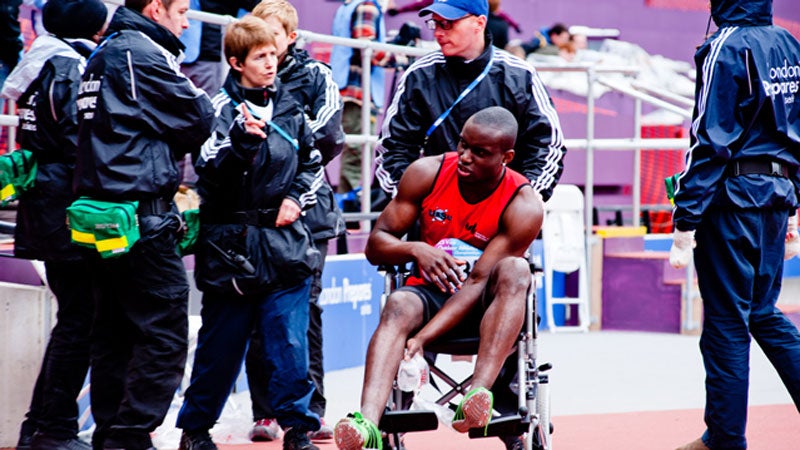Neither.
First, let’s look at what causes that post-workout muscle soreness, otherwise known as delayed-onset muscle soreness, or DOMS. “There’s six different theories for it,” says Dr. Paul Lewis, author of published in the journal Clinics in Sports Medicine. “Right now the consensus is it’s a combination of the six.”
Those six theories are: lactic acid accumulation, muscle spasm, microtruma, connective tissue damage, inflammation, and the loss of electrolytes and enzymes from muscle cells.
“Strain or overworking of the muscle causes microtrauma, and the resulting symptoms in DOMS is all repair of that microtrauma,” Lewis says. “Microtrauma of the muscular cells increases demand on the surrounding muscle cells. Like on a team, if one player gets hurt, the rest have to work a little bit harder.”
Your body will send white blood cells and other substances to the affected area to help repair it—that’s your inflammatory process. To deliver the repair substances, your body will increase blood flow to the area, which makes the area swell. The swelling itself can cause soreness. All of this tends to happen within 24 hours of a tough workout, with pain peaking about 72 hours post-workout, and subsiding within a week.
If you experience DOMS, it doesn’t mean you’re out of shape. It probably just means you did something new. “You could be in great shape and do a new type of exercise that you haven’t done before, and in two or three days, you will have that soreness,” Lewis says. Someone who religiously does bicep curls with 40-pound weights might experience DOMS in their arms after a round of Frisbee golf, for example, because their biceps are not used to that kind of movement.
Furthermore, soreness isn’t necessary to improve fitness. “Your muscles can get stronger, your muscles can get bigger without the soreness,” Lewis says. “Athletes get satisfaction out of the soreness, like, ‘Yes! I’m sore, that means I’m really working hard!’ It just means you’re working new aspects, or different cells.”
Just know this: You can still exercise if you’re sore. “One treatment is to continue to work out,” Lewis says. Moving can help increase blood flow to the affected areas for more efficient repair, and the exercise-induced endorphin release can help dull pain.
But there’s an asterisk. Lewis recommends you workout with less intensity when you’re sore to start. “You may be prone to more serious injury, because you may have a certain number of muscle cells that are injured or are turned off for repair, so you may have a new type of weakness.”
The bottom line: You don’t have to get sore to improve your fitness, nor is soreness a sign that you’re out of shape. Right now, experts believe it simply means you did something to which you’re unaccustomed. You can continue to exercise when you’re sore, just curb the intensity to avoid outright injury.


